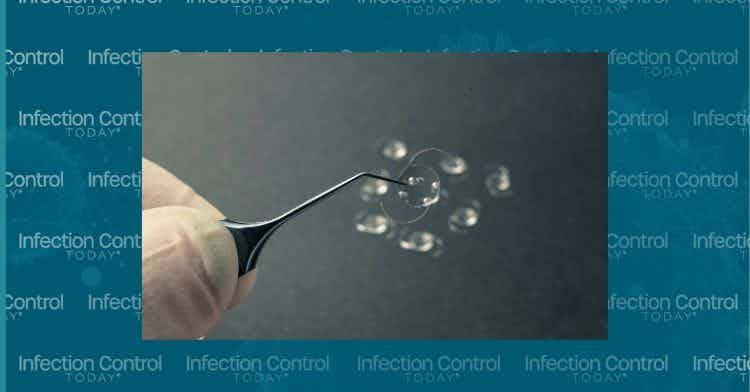Dealing With Damaged Packaging
Q: We are experiencing problems with damaged packaging, especially for our loaner sets. This is causing delays in the operating room and a lot of frustration for the OR and sterile processing staff. What can be done to rectify this?
By Nancy Chobin, RN, AAS, ACSP, CSPM, CFER
Q: We are experiencing problems with damaged packaging, especially for our loaner sets. This is causing delays in the operating room and a lot of frustration for the OR and sterile processing staff. What can be done to rectify this?
A: Unfortunately, your problem is not uncommon. There are many circumstances that can cause damage to packaged items and you need to perform a root cause analysis to determine the causes then develop a plan of correction.
Let’s look at the possible causes:
1. Weight of sets: The Association for the Advancement of Medical Instrumentation (AAMI) and the Association of periOperative Registered Nurses (AORN) recommend that orthopedic loaner sets weigh no more than 25 pounds, including the container. Has your facility required that each loaner vendor comply with this recommendation. Does the sets your facility owns meet this same requirement? (for non-loaner sets the weight should not exceed 25 pounds, without the container). The issue of weight has several implications; a) the ergonomic factor for personnel who have to lift the sets throughout the day, b) the packaging manufacturer’s IFUs regarding the maximum weight of the set for the packaging material selected and c) the sterilizer manufacturer’s recommendations for the maximum weight of sets and the total number of sets per load. Heavy sets can result in personnel “dragging” a set off a shelf or sterilizer cart resulting in damage to the packaging material. In addition, excessive weight of sets may contribute to wet packs.
2. Type of Packaging: The packaging material should be selected based upon the intended use of the set and in accordance with the packaging manufacturer’s instructions for use (IFU). Some packaging manufacturers have weight restrictions for the specific weight of wrapper. Non-compliance with the IFUs could result in damage to the package. The end result is that the packaging material should be able to maintain the sterility of the set until the set is opened. According to the FDA, packaging materials are Class II medical devices and as such must meet the FDA criteria for packaging materials. It is essential to read the packaging manufacturer’s technical data to verify the recommended use and the validated sterilization methods and cycles.
Some facilities are using “corner guards” and other devices to try to prevent damage to the packaging material. It is important to follow the manufacturer’s IFUs and make sure the devices have been validated for the sterilization process selected and are used correctly. These products do not always resolve the problem.
Many facilities are now converting to rigid container systems since these systems have the benefit of protecting the contents from damage due to improper handling and storage, are ecofriendly and cost effective. However, AAMI (ST-77) recommends that loaner sets should not be placed inside rigid containers unless the loaner company has validated for this process. The loaner manufacturer should provide this information in writing, then you should confirm that the rigid container system you are using or wish to use, meets the loaner manufacturer’s requirements. Unless the loaner manufacturer has validated for their instruments to be placed inside a rigid container, you should not do so.
Always observe the condition of loaner set containers for sharp edges and/or damage to the container which could contribute to damage to the packaging. If containers are not in good condition, they should not be accepted and replacements required.
3. Damaged or Rough Surfaces on Sterilizer Carts: Sterilizer carts that are old and/or in need of repair can cause damage to packaging material due to damaged or rough edges. Sterilizer carts should be kept clean and in good condition to prevent damage to packaging materials and avoid employee injury.
4. Incorrect Storage: Most facilities today are faced with inadequate storage space due to the increasing need for instrumentation and equipment. When items are not stored correctly, damage can occur to the packaging due to crushing and compression. When sets are stacked, one has to wonder if all the weight on the bottom set is compressing contaminates into the set. What about the excessive weight on the packaging material itself? Was it validated to be able to hold all the weight? Try to avoid stacking of wrapped sets. Review your instrument inventory; possibly it can be reduced to increase available storage space.
5. Improper Handling: Sterile packages should be handled as little as possible to prevent damage to the packaging integrity and contamination of the contents from compression, crushing, etc. Sterile packs should always be handled with care and with clean hands. Infrequently used sets should be placed in a sterility maintenance cover to protect from contaminates and damage. When removing items from storage, care should be taken to avoid crushing, compressing, sliding, dragging, bending or puncturing the packaging material which can affect the sterility of the contents. Before an item is distributed, the package should be visually inspected for integrity, that it has been labeled correctly, has a lot control label and that the external chemical indicator has the expected color change.
I have used a cart to send multiple loaner trays to the operating to reduce handling and consequent damage to trays. The cart contained enough shelves to make it unnecessary to stack sets; (the shelves permitted two sets, side by side), the shelves were solid (or had plastic shelf liners). The cover for the cart was clear (so see the cart contents) and contained a pocket to place the information for the sets including the surgeon, surgical procedure, date, etc.
There are many factors that can impact on damage to packaging materials. It is important for sterile processing staff to investigate any complaints of damaged packaging and to implement the needed changes. In-services for sterile processing and operating room staff should be arranged to focus on recommended handling of sets to prevent damage. Everyone who handles a sterile pack must take responsibility for its integrity.
Nancy Chobin, RN, AAS, ACSP, CSPM, CFER, is a sterile processing consultant and educator.
References:
ANSI/AAMI Comprehensive Guide to Steam Sterilization and Sterility Assurance in Health Care Facilities, ST79:2010, & A1:2010, & A2:2011, & A3:2012, & A4:2013.
ANSI/AAMI Containment devices for reusable medical device sterilization, ST-77, 2013.
The Sterile Processing Conference Survival Guide: How to Make the Most of Your Next Event
March 25th 2025From expert speakers to cutting-edge tools, sterile processing conferences, like the 2025 HSPA Annual Conference and the SoCal SPA's Spring Conference, offer unmatched opportunities to grow your skills, expand your network, and strengthen your department's infection prevention game.
Redefining Material Compatibility in Sterilization: Insights From AAMI TIR17:2024
March 24th 2025AAMI TIR17:2024 provides updated, evidence-based guidance on material compatibility with sterilization modalities. It offers essential insights for medical device design and ensures safety without compromising functionality.









